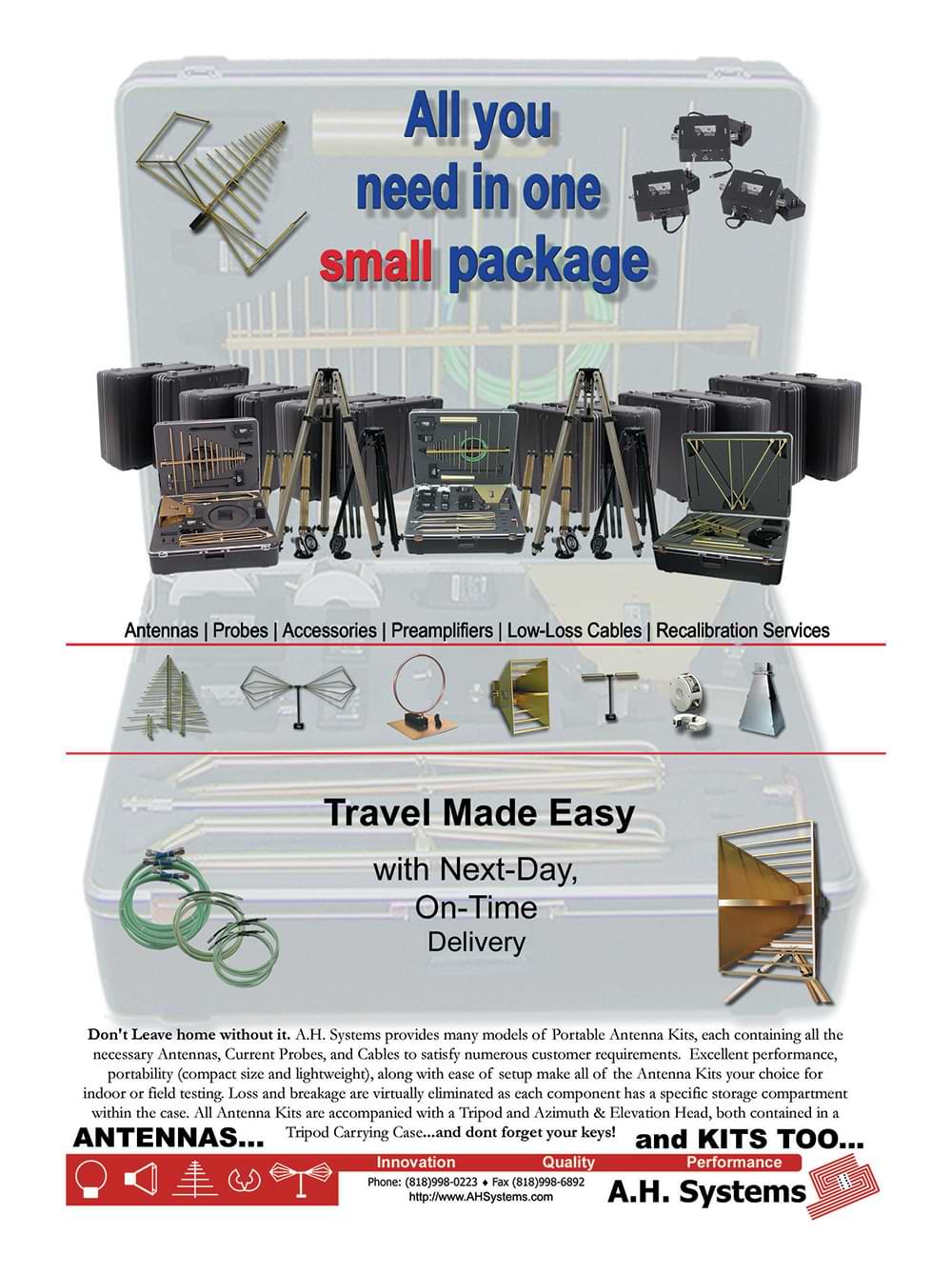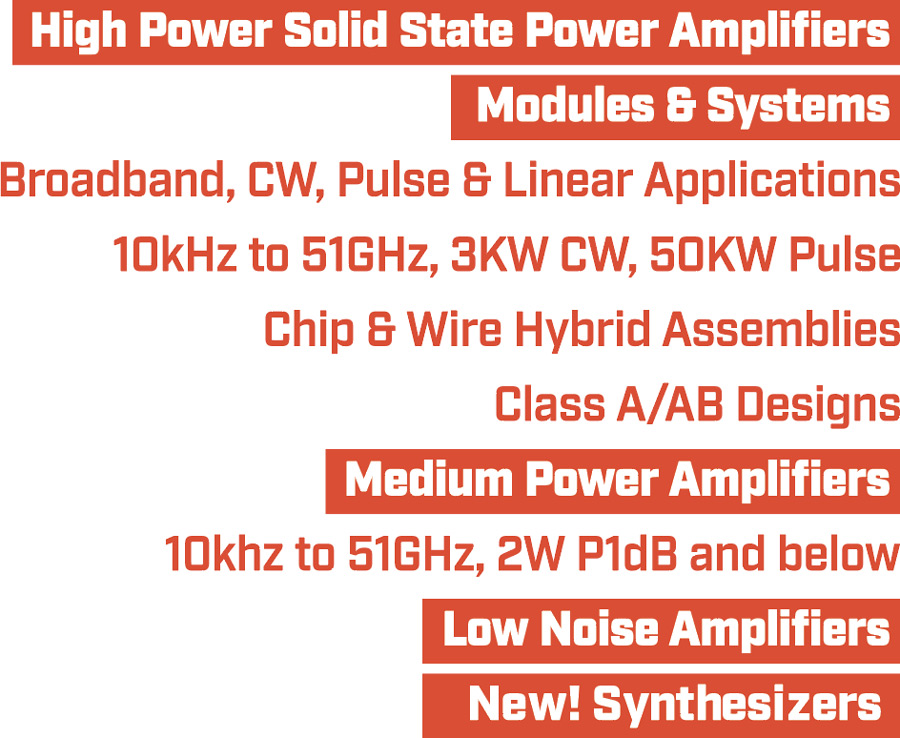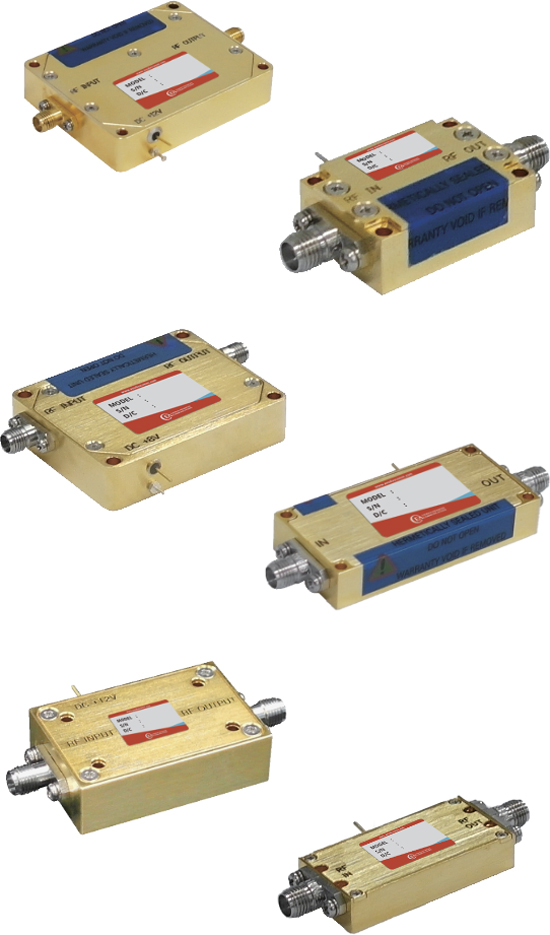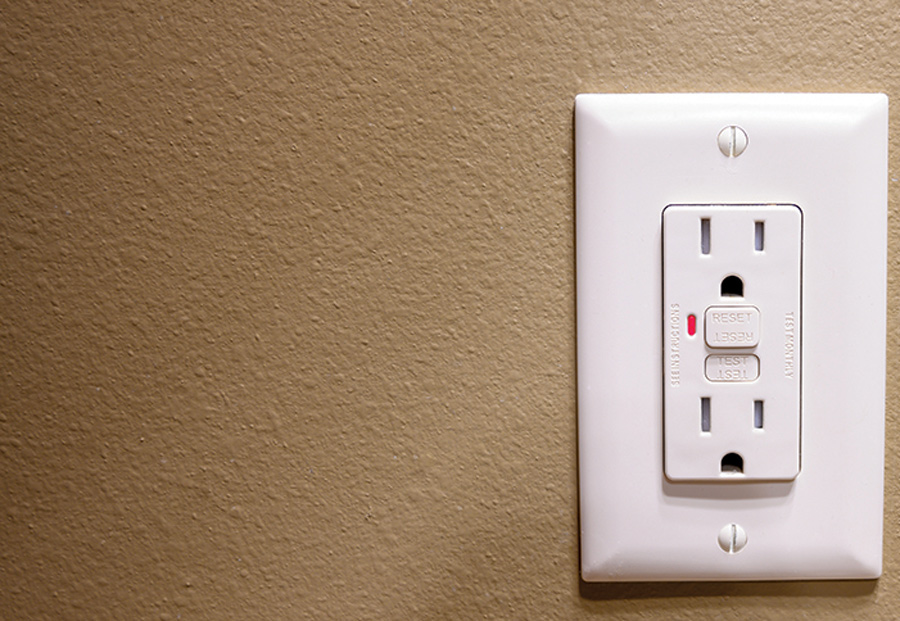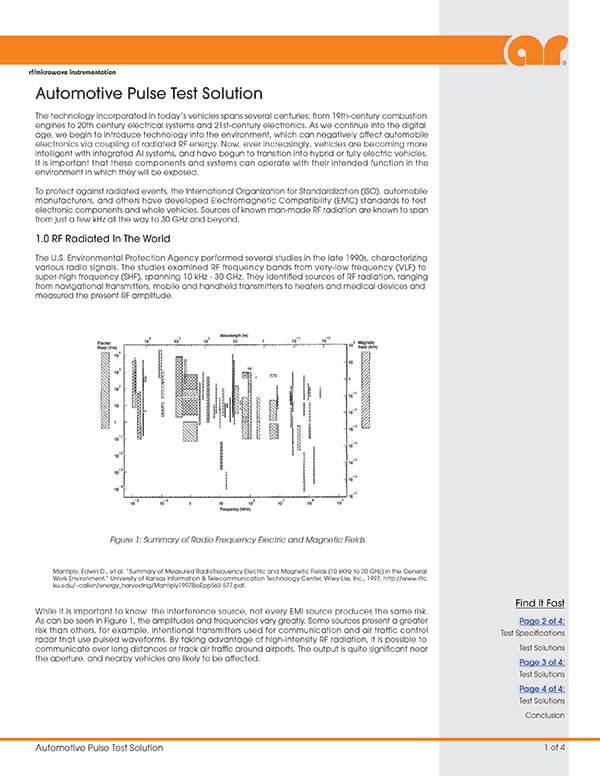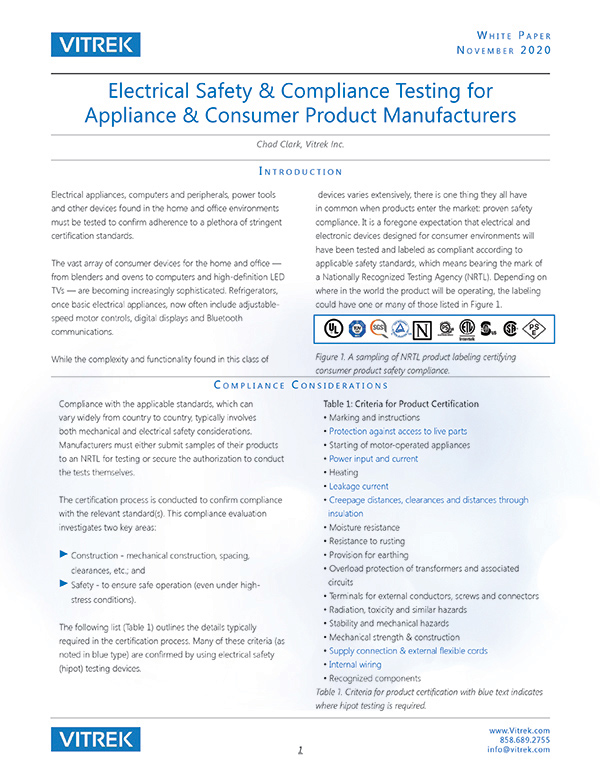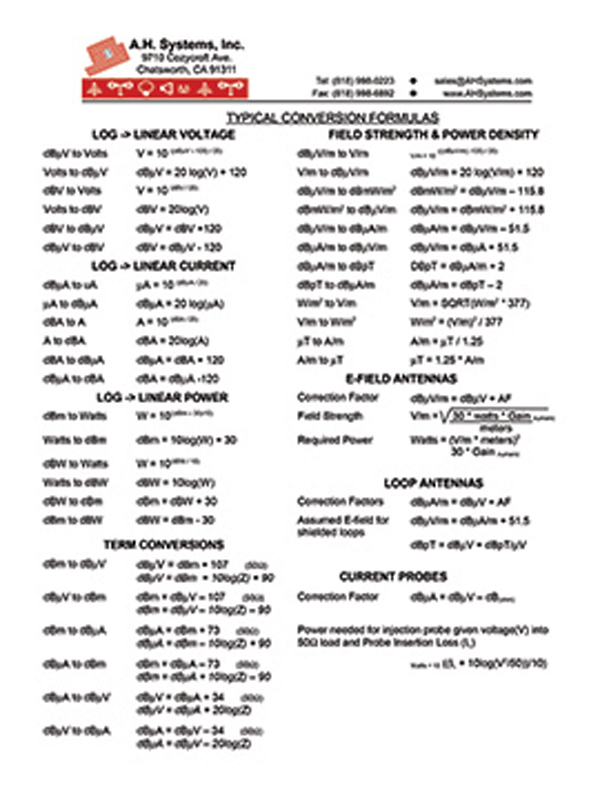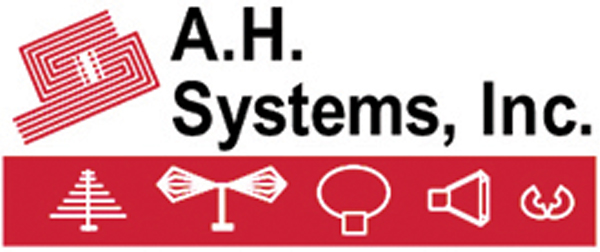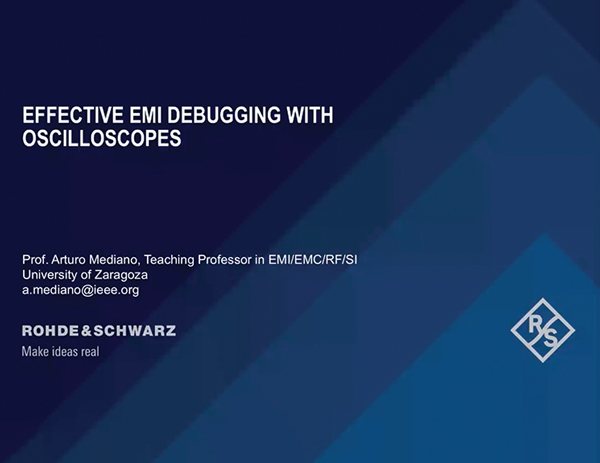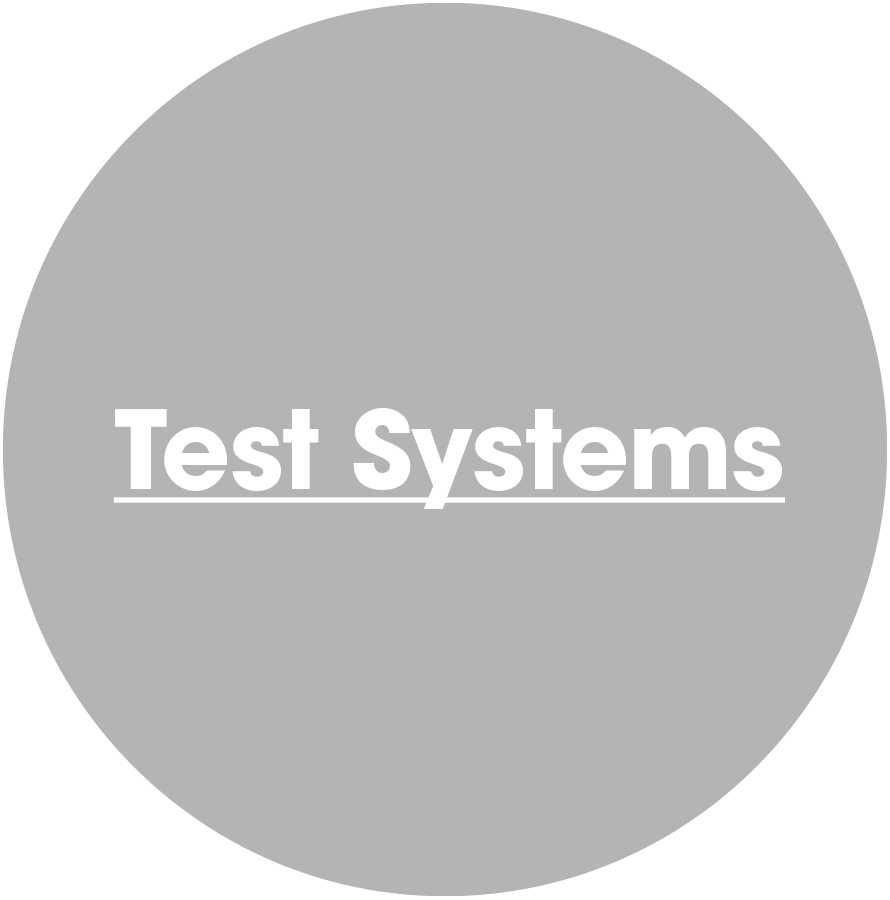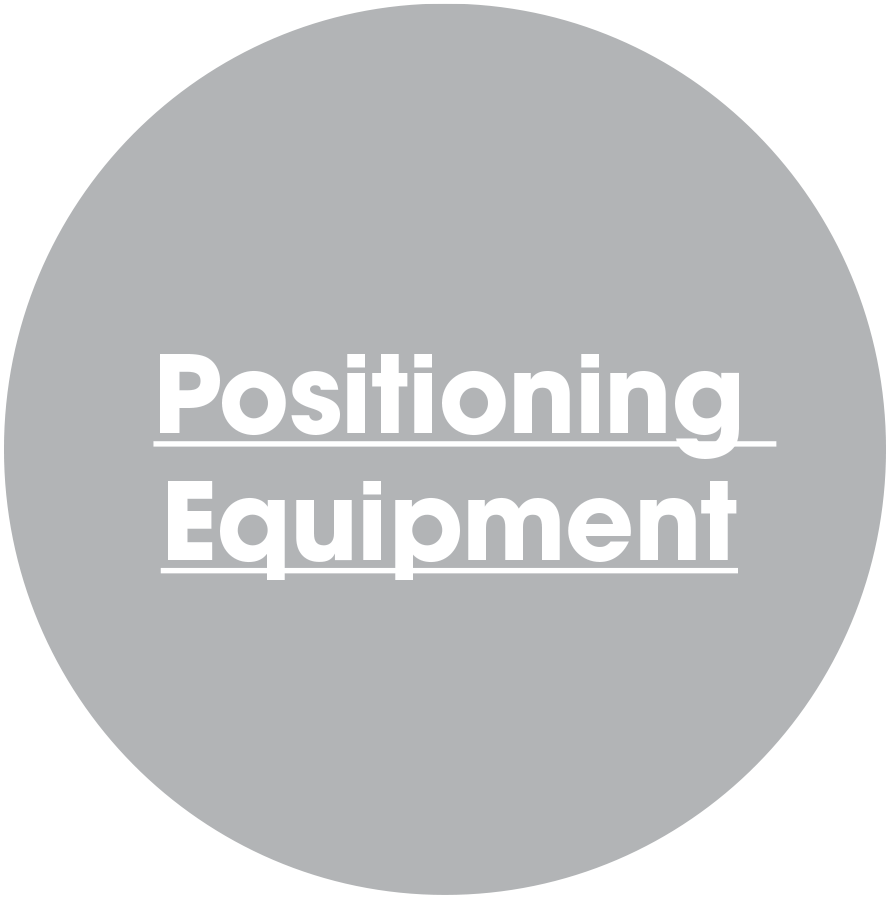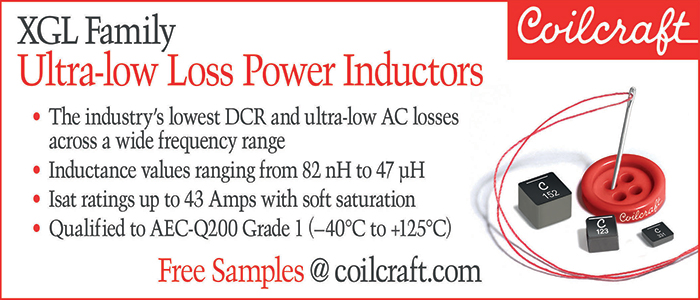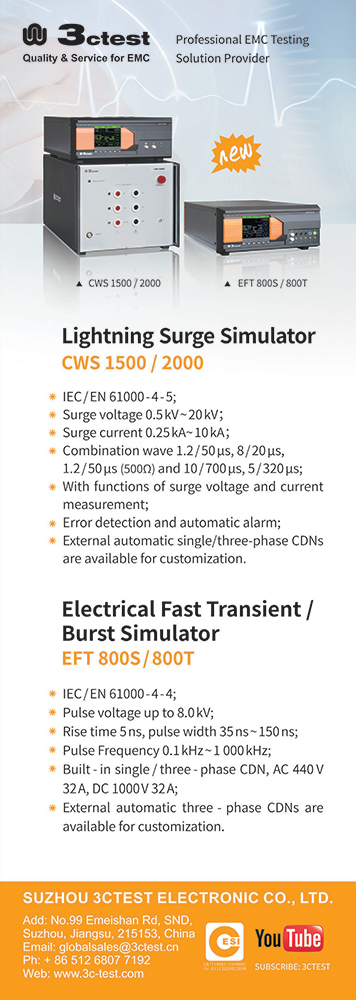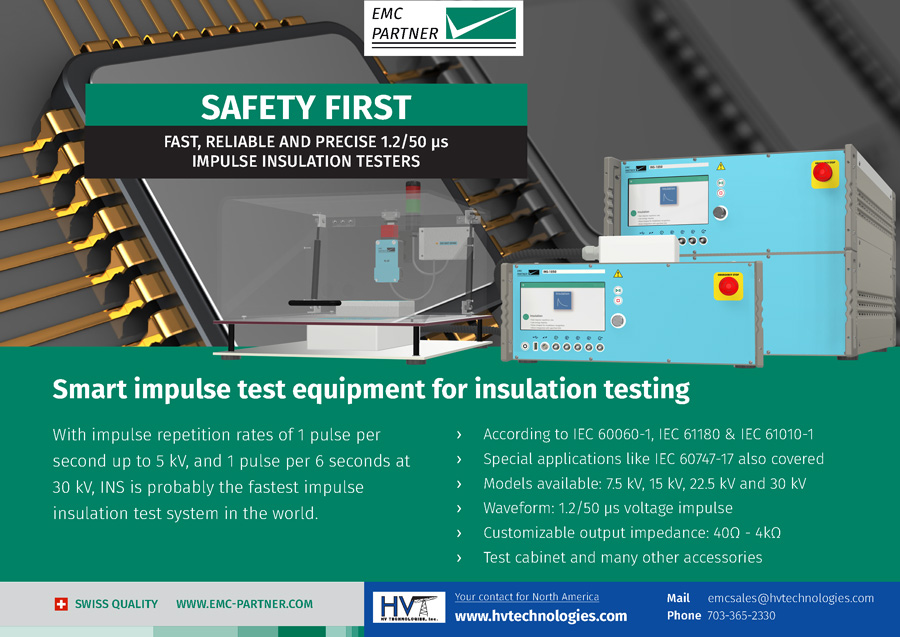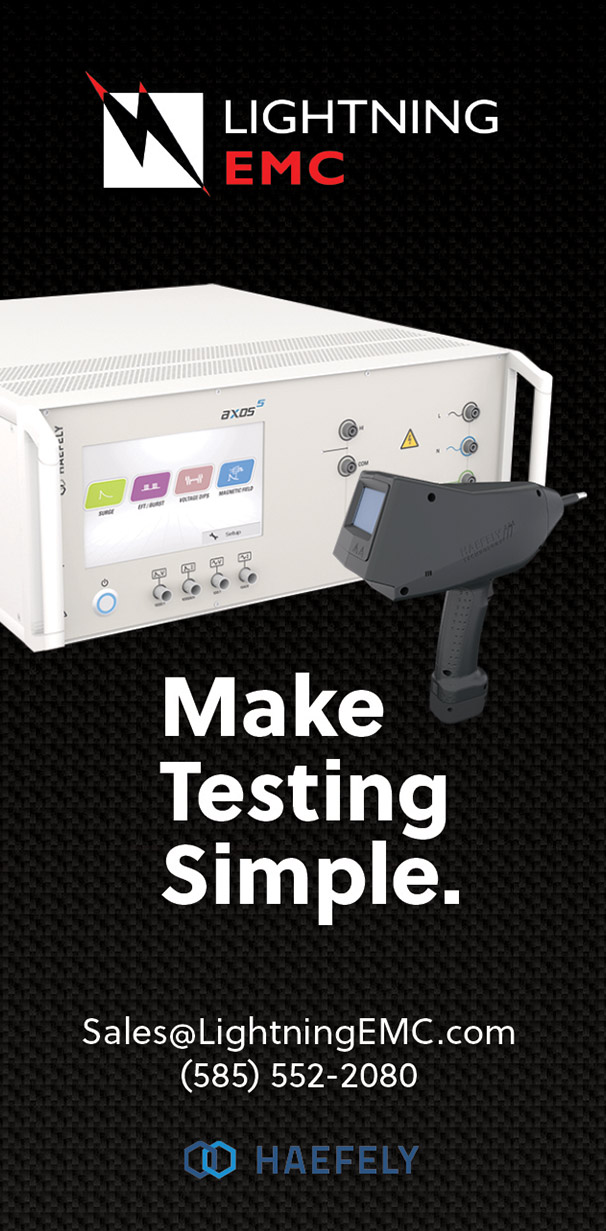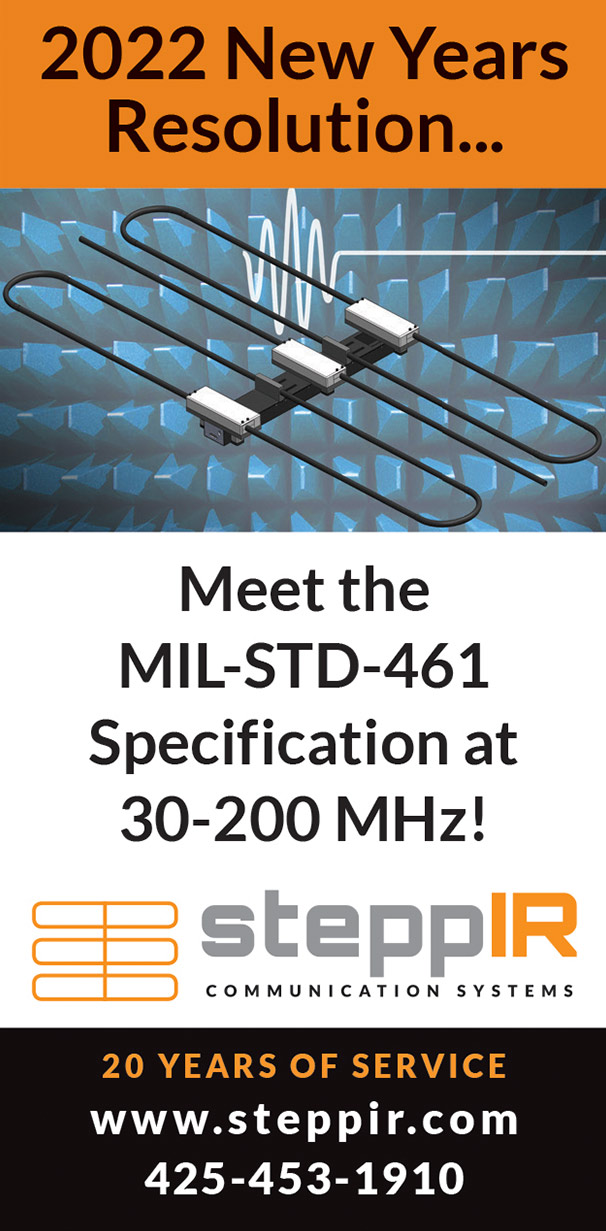

Conducted Emissions Feedback from VSD-Operated Products
Everything You Need to Know About EV Battery and BMS Testing in Validation and Production Scenarios
Conducted Emissions Feedback from VSD-Operated Products
Everything You Need to Know About EV Battery and BMS Testing in Validation and Production Scenarios
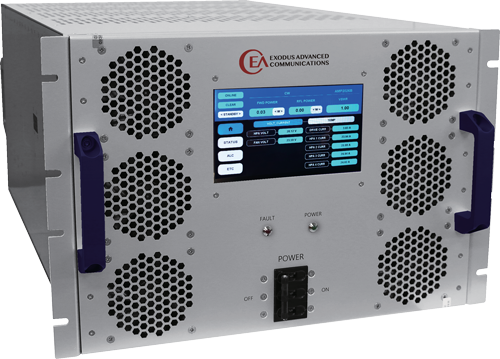
Exodus AMP2030D-LC, ideal for broadband EMI-Lab, Comm. and EW applications. Class A/AB linear design for all modulations & industry standards. Covers 1.0-6.0GHz, producing 600W Minimum, 400W P1dB and 58dB minimum gain. Excellent flatness, optional monitoring parameters for Forward/Reflected power, VSWR, voltage, current & temperature sensing for superb reliability and ruggedness. Integrated in our compact 10U chassis weighing approx. 50kg.

Exodus Broadband Amplifier model AMP3085A covers 6.0–12.0GHz and produces >100 Watts minimum power 120W nominal. The AMP3085A has a minimum gain of 50dB with -25dBc harmonics. The unit is a compact Linear Class A/AB design for optimum reliability & ruggedness for all applications. Including current, temperature sensing and shutdown functions. Nominal dimensions of 180W x 200L x 27H mm with SMA-Female Input & N-Female RF Output connectors.

Exodus AMP2065A-LC is designed for replacing aging TWT technology. A broadband, rugged EMC Class A/AB linear design for all modulations & industry standards. Covers 6.0-18.0GHz, produces >200W with a minimum 53dB gain. Excellent flatness, optional monitoring parameters for Forward/Reflected power, VSWR, voltage, current & temperature sensing for superb-reliability. Exodus Quiet-Cool technology in our compact 7U-chassis.
Always Innovating
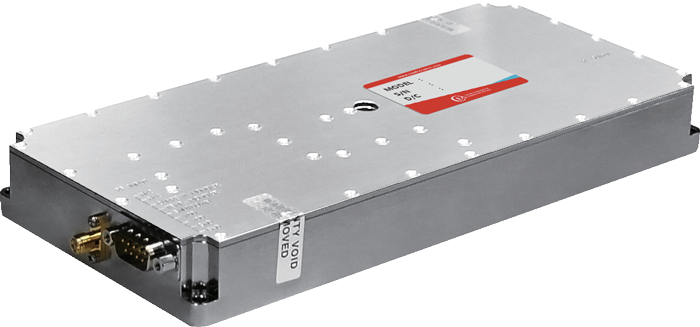
2.0 – 8.0GHz, 70W, Solid-State Module replaces aging TWT’s
Exodus Advanced Communications introduces our compact 2.0-8.0GHz Module. This ideal TWT replacement produces 70-watts minimum, 80-90W nominal power. The minimum power gain is 48dB with <-20dBc harmonics. Included are current & temperature sensing and built-in protection circuits for optimum reliability & ruggedness for all applications. The nominal weight is 3lbs, and dimensions of 4.3”W x 7.8”L x 1.0”H.
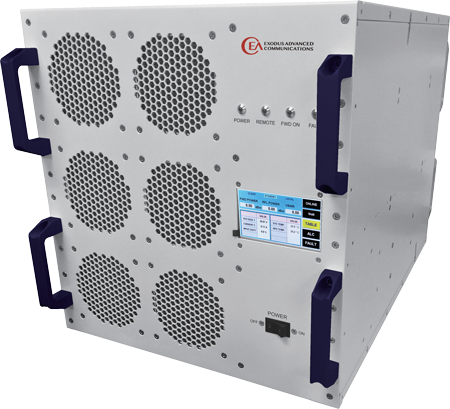
Exodus Advanced Communications’ Pulse Amp (2.0-4.0GHz, 4KW Pulse) is designed for Pulse/HIRF, EMC/EMI Mil-Std 461/464 and Radar applications. Other frequency ranges & power levels available all providing Superb Pulse Fidelity. Up to 100usec pulse widths, up to 6% duty cycles with a minimum 66dB gain. Available monitoring parameters for Forward/Reflected power in Watts & dBm, VSWR, voltage, current, temperature sensing for outstanding reliability and ruggedness in a compact 10U chassis.

Exodus Advanced Communications introduces our Ultra-Compact 700MHz-6.0GHz lightweight Module. This module produces 25-watts minimum, 30W nominal power. The minimum power gain is 44dB with <-20dBc harmonics. Included are current & temperature sensing and built-in protection circuits for optimum reliability & ruggedness for all applications. The nominal weight is 450 grams, and dimensions of 75W x 105L x 30H mm.

ISSN 1948-8254 (print)
ISSN 1948-8262 (online)
is published by
Same Page Publishing Inc.
451 King Street, #458
Littleton, MA 01460
tel: (978) 486-4684
fax: (978) 486-4691
©Copyright 2022 Same Page Publishing, Inc. all rights reserved
Contents may not be reproduced in any form without the prior consent of the publisher.
While every attempt is made to provide accurate information, neither the publisher nor the authors accept any liability for errors or omissions.
publisher
bruce@brucearch.com
keith.armstrong@
cherryclough.com
Leo@EisnerSafety.com
dgerke@emiguru.com
ken.javor@emcompliance.com
kenrossesq@gmail.com
wernerschaefer@comcast.net
Subscriptions outside North America are $129 for 12 issues. The digital edition is free.
Please contact our circulation department at circulation@incompliancemag.com

white paper provided by

Commission Implementing Decision (EU) 2021/2273 specifically updates harmonized standards originally detailed in Annex I and Annex II of Commission Implementing Decision (EU) 2019/1956. Compliance with the requirements of applicable harmonized standards in (EU) 2019/1956 confers a presumption of conformity with RED requirements…
Those are the findings of a recent study by researchers at the IoT Inspector platform and German IT magazine CHIP, who found a total of 226 potential WiFi security vulnerabilities in routers manufactured by nine companies, including Asus, D-Link, Netgear, and Linksys. Individual routers with the largest number of identified individual vulnerabilities were the TP‑Link Archer AX6000 with 32 vulnerabilities and the Synology RT-2600ac router with 30 vulnerabilities…

Other ar companies: modular rf • sunar rf motion • ar europe
Other ar companies: modular rf • sunar rf motion • ar europe
for EMC Testing.

For more information on AR Amplifiers visit us at www.arworld.us/systems or call 215-723-8181.

n the past decades, the Internet has been booming and connecting people around the world. Current technology trends tell us that not only the people but also machine-type devices, e.g., household appliances, street facilities such as traffic lights, and connected vehicles, are going to be connected and communicate with each other. The Internet of Things (IoT) is a buzzword crossing all vertical industries. We are now, so to speak, in the dawn of the IoT era. With IoT technology, the world is getting increasingly smart. New concepts such as smart cities, smart homes, and smart agriculture are becoming a part of daily life and gradually changing our lifestyles.
Cellular IoT (CIoT) is considered one of the most attractive contributions to the IoT industry. The technologies referred to as licensed spectrum-based low-power wide-area (LPWA) access technologies are deployed in the GSM, LTE, or 5G new radio (NR) network and provide benefits with respect to quality of service, reliability, latency, and coverage range. Yet they also have the characteristics of low complexity, low cost, and low power consumption. CIoT technology provides the opportunity for enterprises to increase efficiency and improve value for the customer.
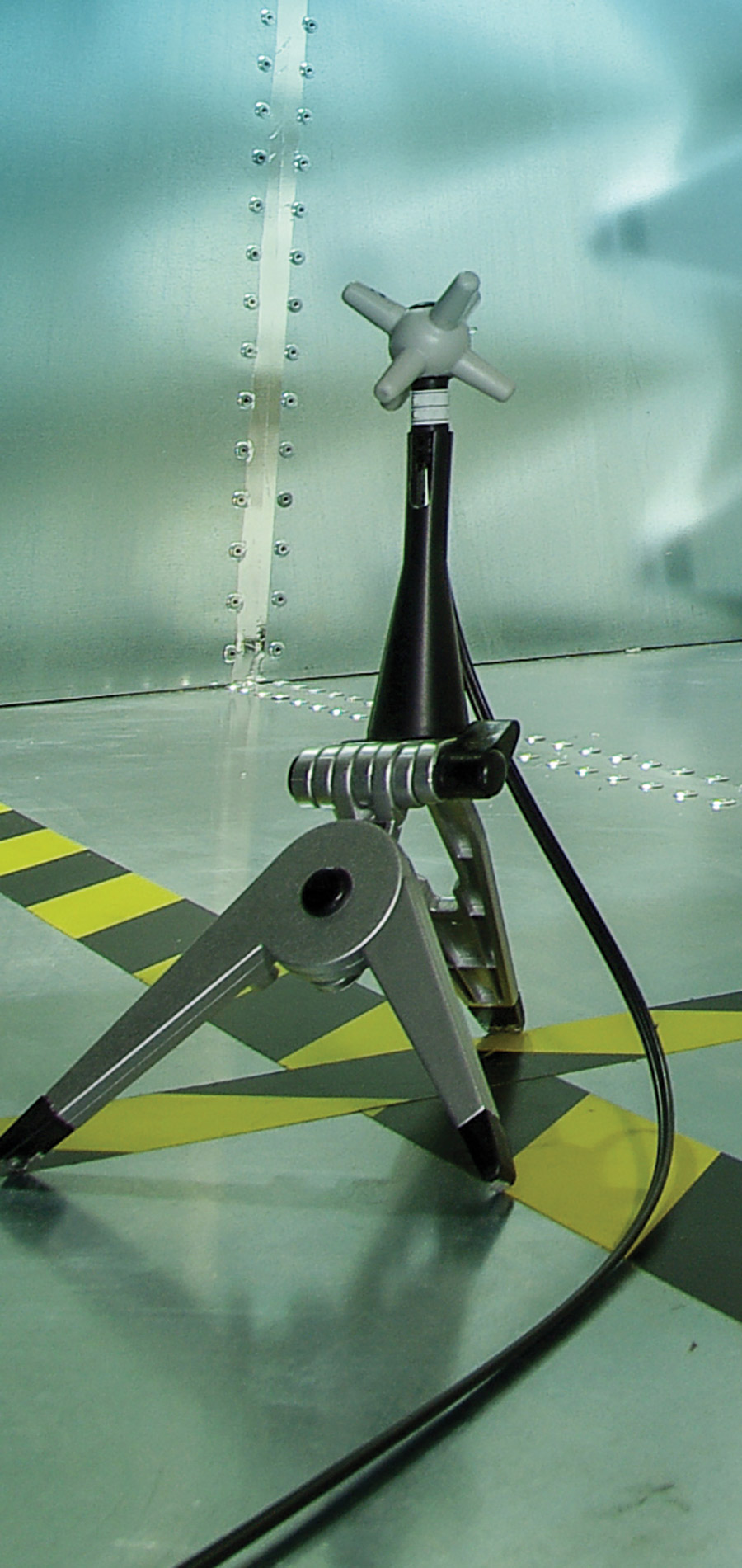
(radio frequency) field probes are an essential piece of equipment used for measuring the intensity of radiated RF fields. Although this instrument is crucial in implementing a radiation immunity test system, system specifiers often gloss over this essential element after spending a considerable amount of time and energy selecting amplifiers, antennas, and other equipment to generate the required RF field. A live test using a field probe will then determine if the RF test system’s expected performance has been achieved.
These specialized RF measuring instruments carry a unique set of specifications. Understanding the specification definitions, field probe design characteristics, and other varying features will, in turn, allow a confident and informed decision in choosing a suitable field probe.
An example of a frequency response curve is shown in Figure 1. If the probe does not cover the entire frequency range of the test application, multiple probes may be required.
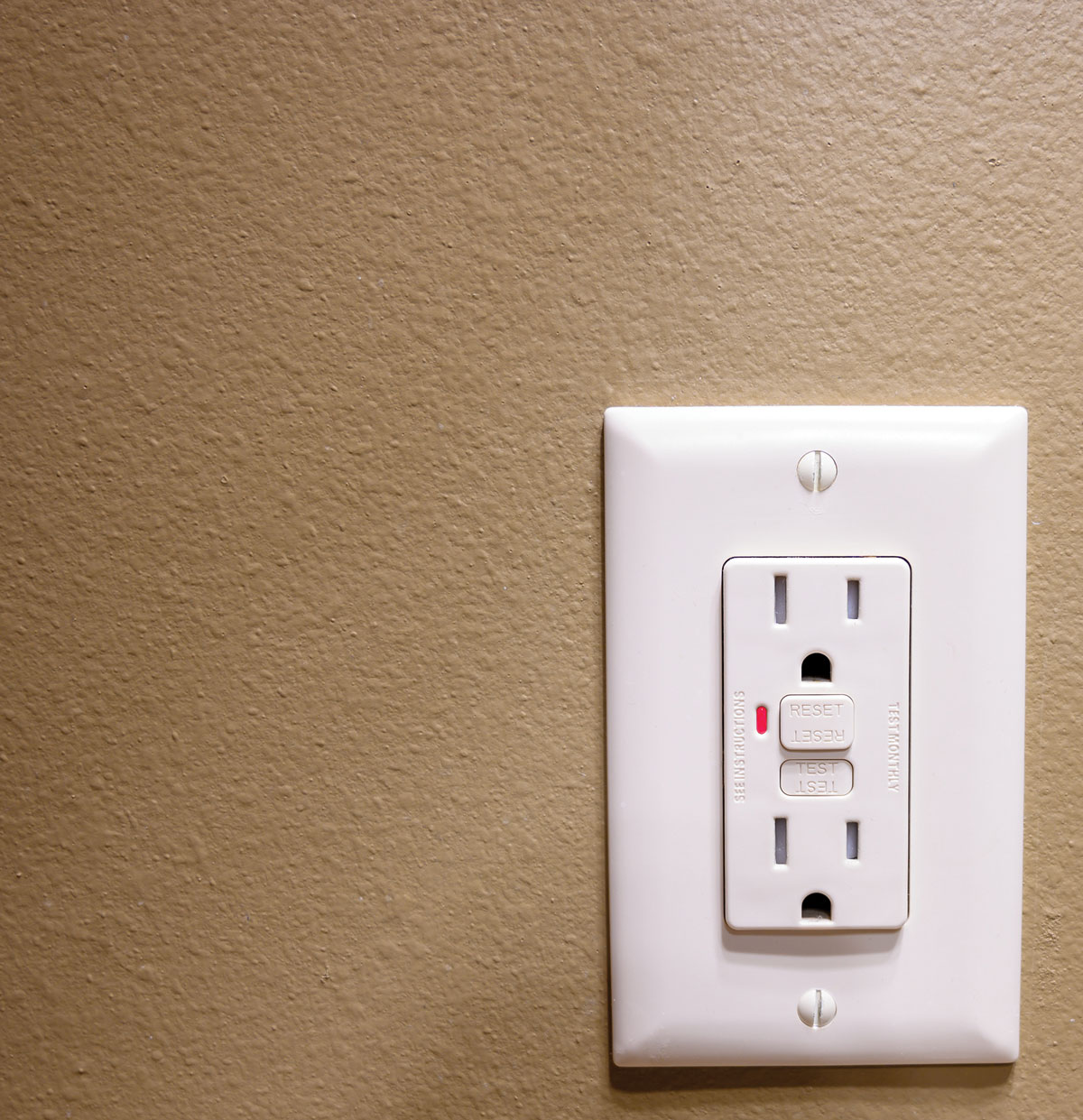
Editor’s Note: The paper on which this article is based was originally presented at the 2020 IEEE International Symposium on Product Safety Engineering held virtually in November 2020. It is reprinted here with the gracious permission of the IEEE. Copyright 2021 IEEE.
Nuisance tripping of GFCIs (Ground Fault Circuit Interrupters) has given rise to questions about the role of conducted emissions from equipment using switching methods, such as VSDs (Variable Speed Drives), in causing a GFCI to trip. An earlier paper [1] described a test condition where several GFCIs would trip inadvertently under an applied Electrical Fast Transient (EFT) impulse; this false-positive result is normally considered nuisance tripping since the tripping cause was not determined. This follow-on paper provides additional data from testing aimed at looking at the line conducted emissions and ground lead touch current from some units while under actual operation using GFCIs.
Note that most GFCIs use the difference in line and return current to trigger protection; however, a common electric shock is from current in the earth/ground lead when this lead is not properly grounded. The differential line current is then a proxy for the earth/ground current hazard.
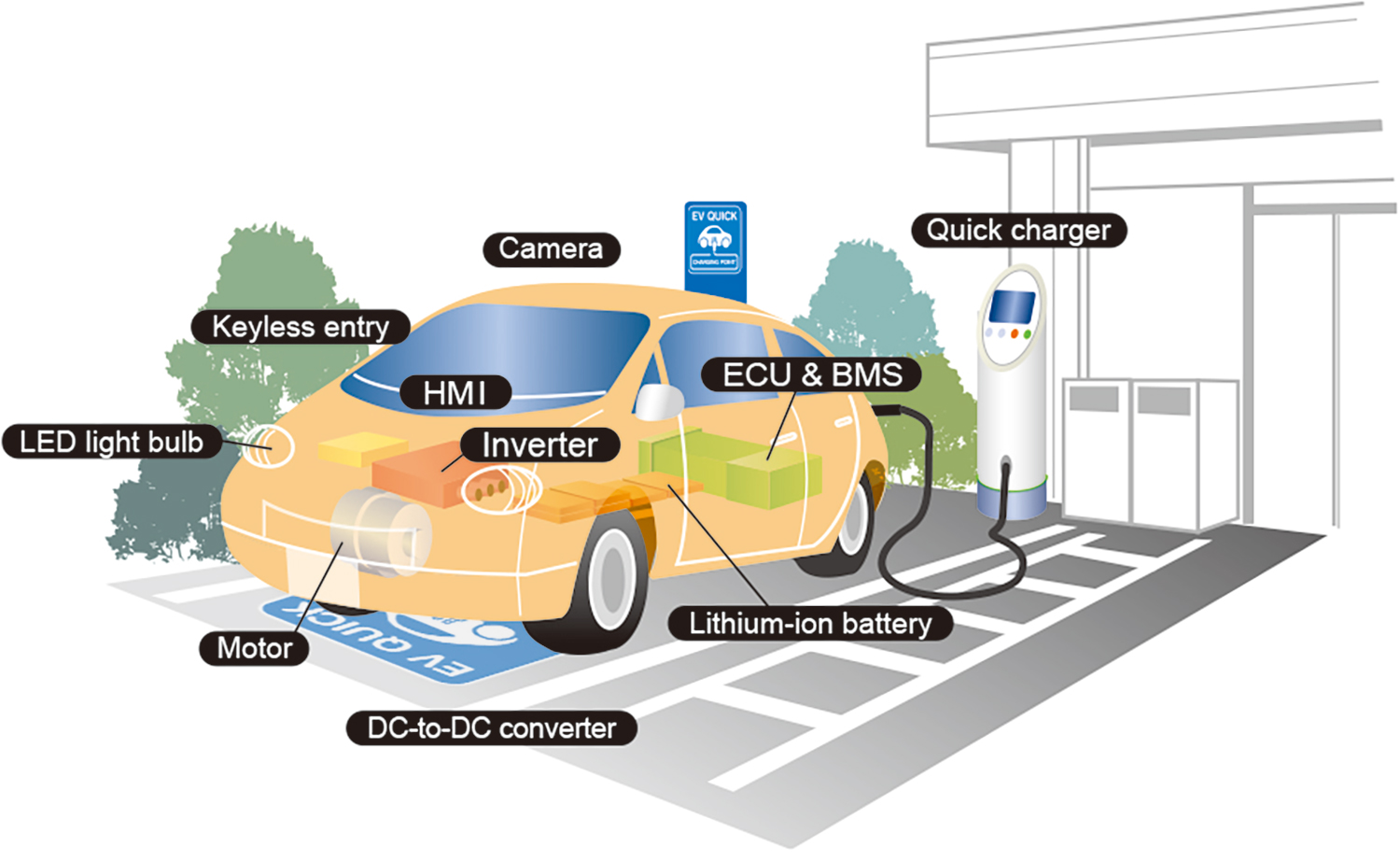


Toll free (US only): 1-855-EMC-PART
International: +1-408-971-2055
Email: sales@kgs-ind.com
Website: www.kgs-ind.com
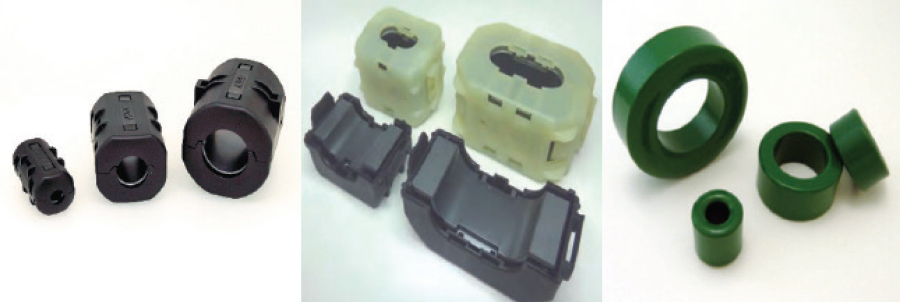
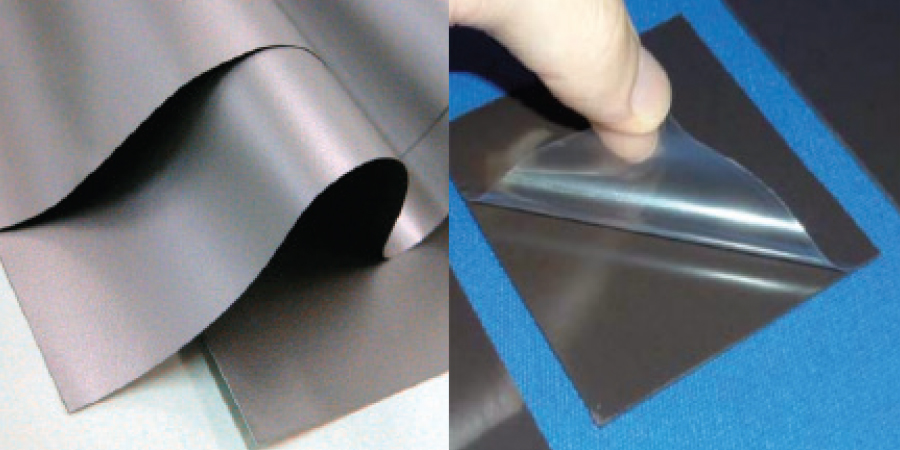

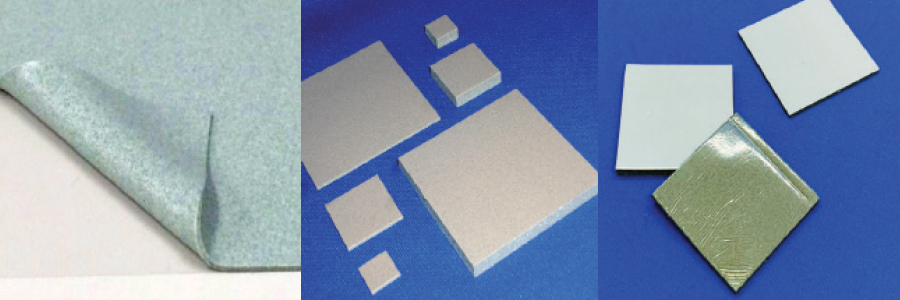
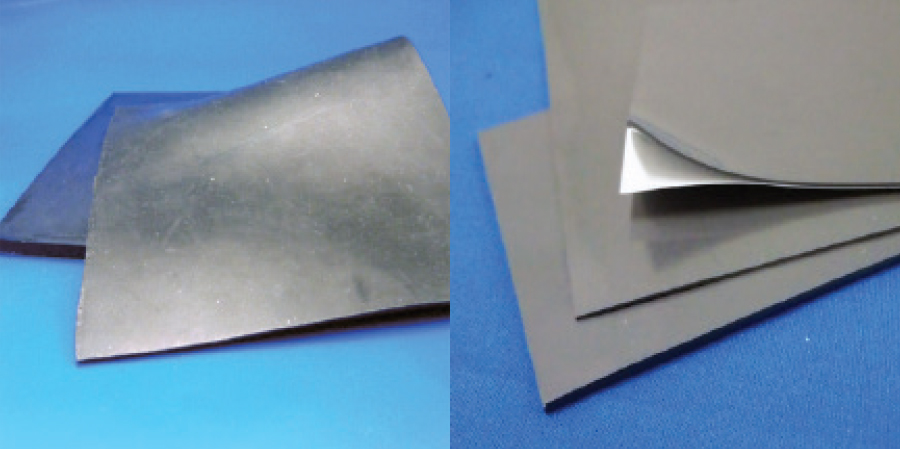
EV Battery and BMS Testing in Validation and Production Scenarios

lectric vehicles are clearly a rapidly growing part of the automotive scene. They promise low or no emissions, conceivably low cost of energy from the power grid, yet they will continue to deliver us safely from here to there. However, electric vehicle design and manufacturing is clearly a paradigm shift for the automotive industry – new drive systems, technologies, and test plans.
Electric vehicles are bringing new test and validation challenges as the electronic and software content of the vehicles grow. In this article, we will discuss the basics of electric vehicle battery pack designs and some of the tests that should be performed on them in a manufacturing environment. We’ll also discuss a conceptual solution to this complex testing challenge.
In Part 8, we evaluated the performance of the baseline AC/DC converter. The baseline AC/DC converter had only the components needed for functionality and did not have any specific EMC components populated. The results showed multiple failures in both radiated and conducted emissions.
Here, we present a systematic approach to improve these failures by populating the PCB with optional EMC countermeasures on component pads that have already been designed into the PCB layout and show their impact on the radiated and conducted emissions. The EMC countermeasures are illustrated in Figure 1 as purple dashed boxes labeled EMC-A through EMC-F.
View Index
ESD Best Practices for Technology Change
February 8-10
Applying Practical EMI Design and Troubleshooting Techniques
Advanced PCB Design for EMC & SI
February 13-18
European Microwave Week
March 8-11
EMC Compo
March 15-17
EMV 2022
March 27-April 1
EuCAP 2022 – The 16th European Conference on Antennas and Propagation
A2LA Tech Forum 2022
April 5-7
DesignCon 2022
April 19
EMC mini 2022
April 18-22
EMC Week
April 28-29
Principles of Electromagnetic Compatibility


